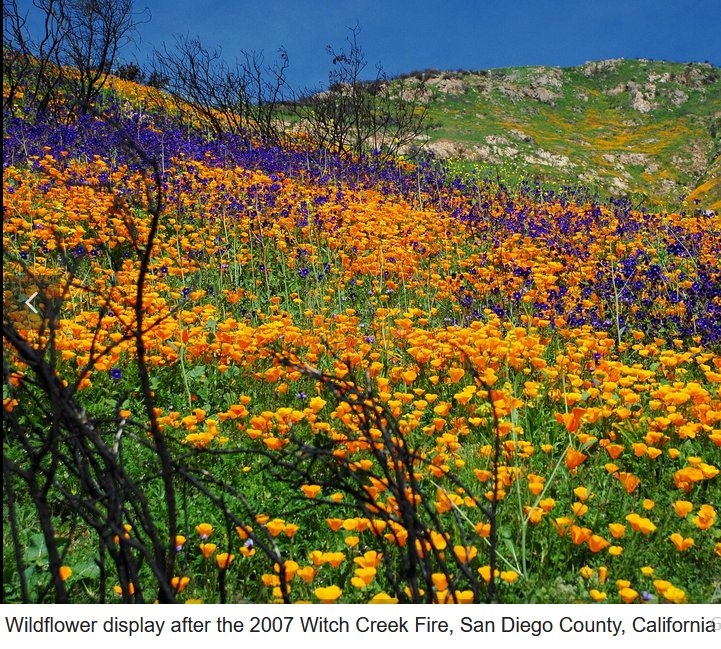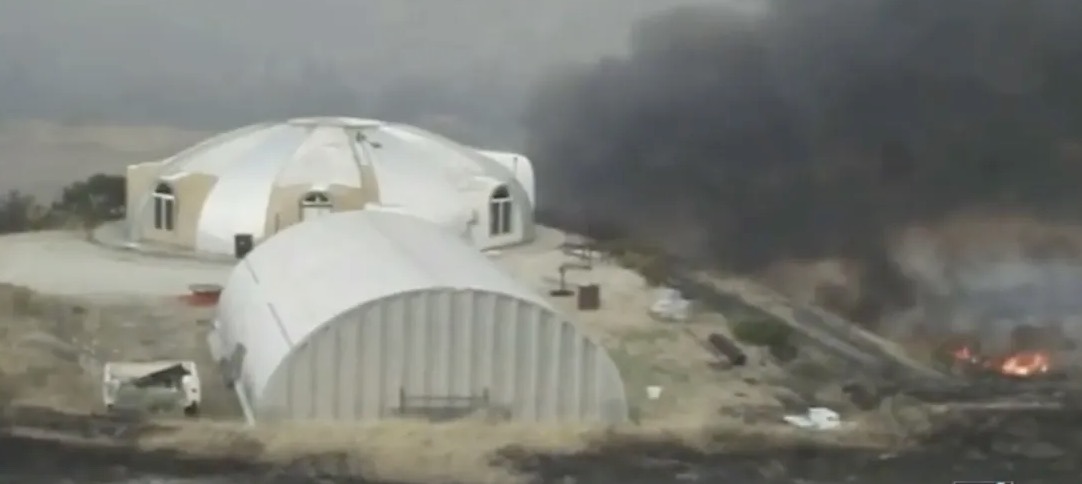The plague of NIMBY’s may yield if a real plan is put in place to rebuild better. Vast areas could be rezoned for density. A way of addressing the enormous number of displaced people could also address the largest homeless population in the USA. The city that defines urban sprawl could be redefined. How does this play out?
Removed by mod
That is totally tangential. LA has always had winds from the desert after the solstice. This is not unusual weather. It is very common here. I’ve fought this pattern every year for a decade and a half on a bicycle commuting everywhere. The dry desert wind will be countered by the southern coastal. Then it will go back and forth until the southern pattern produces rain. It works like this every year.
Removed by mod
No, seriously, fire season is very normal for california.
When the fuel sources build up enough (i.e. no periodic burns), it can quickly run rampant in housing areas (which are mostly made of wood).
It’s so normal, it’s part of the ecosystem lifecycle!
https://en.wikipedia.org/wiki/List_of_California_wildfires
https://en.wikipedia.org/wiki/Chaparral#Fire

Removed by mod
If you look at the Wikipedia on California wild fires you will see that no, it’s not more frequent
ignoring the word worse
They also list total acres burned, and no, its not worse.
Please block me as I have done you.
Removed by mod
Honestly yeah. There is plenty of money and influence in the area that burned. Now you have a bunch of people with the lawyers, money and social following to be a real pain in the ass if they want to. And they got one hell of a reality check.
Now the real question is what will they call for? Better buildings? Limited building in fire prone areas? Firefighter funding/manning? I fear it will be a general #omgclimatechange and nothing actionable
surely the problem with this idea is that each plot of land will still be individually owned, making dramatic changes to use and layout difficult? Or am I missing something about your idea?
Zoning laws are largely at play. The rebuild could change zoning for density and therefore greatly incentivise change.
The building code has already proved itself as a failure. So preventing rebuilding under the same standard is essential to prevent reoccurrence. This means that rebuilding cannot be entirely strait forward. By allowing densities like New York or Paris, as random examples, you are essentially greatly increasing the property values in these areas. That should help with those that cannot rebuild and it should result in developers buying out a considerable portion of homes. Displacing large numbers of people will never be cheaper or easier than it is right now. All it takes is allowing the height restrictions to change and allowing properties to use every bit of available space like most major cities around the globe. The fire code changes are a given. That is not a real problem for large scale development. It is a major issue for piecemeal and spotty development over time like what had happened. The actual protections and code should not rely on separation and the proximity of foliage. It should rely on non flammable materials and homes that can withstand any blaze by design. The materials should not be single sourced, monopolized, or patented either. The gov should only write standards required, but that should encompasses products available in a competitive open market.
The chief issue is zoning. If the ancient outdated single family home and condos zoning stays, so do all the problems of exorbitant housing costs, climate ruin, and a car centric dystopia. All of these problems are due to a lack of zoning reform to increase density.
Thanks, that’s a really clear and detailed explanation.
Still, though, on an individual basis, I’m not sure how I’d feel if my house had been burnt down and then the government said that I couldn’t rebuild it how it was before.
You are placing yourself above your neighbors. You should be asking his you’d feel after rebuilding when nothing has changed and the same recipe of events will produce the same outcome. Change is required.
I’m not involved at all, just saying that suddenly not being able to rebuild your family home could be quite devastating!
The whole thing is awful for sure. If it happened to me, with my disability, it would be beyond devastating to go through.
I am largely abstracting in a disconnect from my sense of empathy, and that can seem cold. There are many harsh realities that must come from this. Rebuilding might be possible in some instances using updated materials and codes, but I think stuff will play out differently.
It would be interesting to know how many homes were owned by by the residents. I bet at least half or more were not. The opportunity to create the changes and the future we really need is too great to pass up. Creating that future must come at the cost of someone’s present normal. It is a far lower cost to pay for someone that is holding onto nostalgia for a place and time that no longer exists. That harsh reality will take time to sink in and greave. I totally understand that difficulty far more than most. With becoming physically disabled, in many ways I have had to greave my own death, in that I lost most of what previously defined and was important to me.
The best thing possible to help people going through these difficult times of loss is to help them out financially. Zoning changes for density and height greatly increase property values. So whether they are financing or selling, the rezoned property is essentially gifting them a financial buffer without a burden to the taxpayer. The potential for better integrated public transit, cheaper safer housing, and walkable communities could be seen as just a side effect relative to doing everything possible to help those in need. Nostalgia will never recreate the past. Chasing that rainbow leads to heartache.
I think the big shift will come when fireproof buildings are a requirement of the building code, as well as encouraged by insurance policies.
Huh? A big part of the problem was that there was housing so close to steep hillsides in the first place, I don’t think building more dense housing would be wise.
It would be if fire codes and improved materials are required. The problems arise from poor overall standards across scattered development. There were pockets of new and old. That will not be the case in these areas moving forward.
https://www.youtube.com/watch?v=Vqq8-2ereKg

Reminds me of this concrete geodesic dome that survived previous fire seasons.
That is pretty awesome. Thanks for sharing.
Oh… I should add, it wasn’t a total success, the power poles supplying the building burned down in the fire - so they lost electricity.
A great demonstration of building for the environment
I think buried power lines would work better. Now would be the time to make that happen
You’ll like the Pensacola Beach UFO house. That thing his withstood loads of hurricanes. Also note that it’s cinder block. All the 50s houses built like that are still around after the McMansions get wiped off the face of the Earth.
Do you like, live in LA? I’m six miles from one of the fires and I can tell you now that putting up a bunch of dense housing where the fire was will totally not prevent fires in the future. The Santa Ana winds will continue and they’ll do so a lot more strongly if we don’t actually tackle climate change.
Probably the housing stock there shouldn’t have been built there in the first place, but they weren’t aware decades ago that we would have an event like this but now we do.
Yeah I live in Orange County in the same type of dense mess. There are plenty of standards and materials for buildings that will not burn. Building in the crap toothpick and papier-mâché style with no regulations for non flammable materials is the problem.
Do you consider fires forcing people to evacuate their houses casual conversation?
There is [email protected] for that
What do you think it means when a group fails to have any substance in conversation, cannot deal with current subjects, or reacts negatively at basic complexity presented as a casual discussion in an attempt to create discourse with diverse opinions?
Those are three accusatory, loaded, and unfounded questions and pretty fuckin rude
It is a response in the exact same tone I read, and this is exactly how In felt as well. I’m glad that point was clearly made. I did not start that.
I mean he’s right- nothing about your tone or conversation anywhere here is casual and light. Like what the community is for
Locking the topic as it doesn’t fit the second rule, as well as based on the negative score.
Keep the conversation nice and light hearted
Feel free to ask this question again on [email protected] or other non-casual communities, there are plenty of them on Lemmy. Feel free to DM me on Matrix if you want to discuss this decision.





